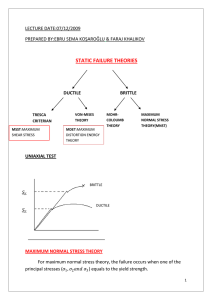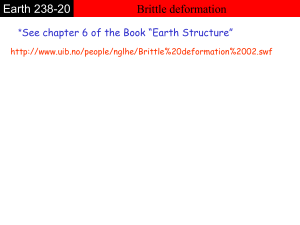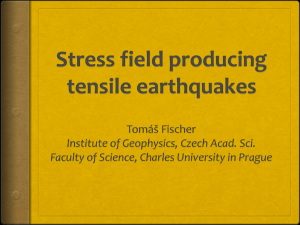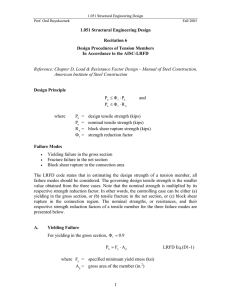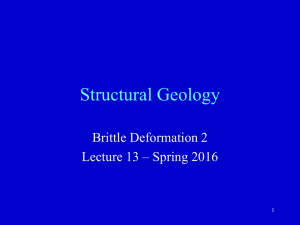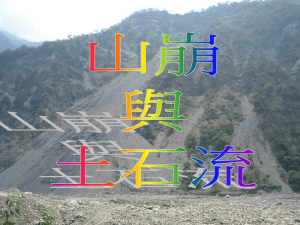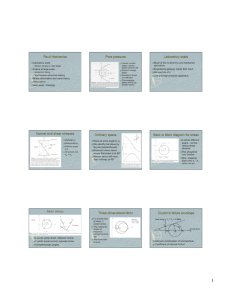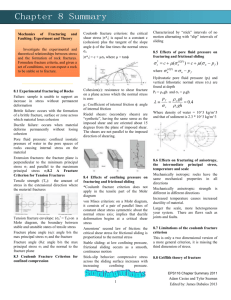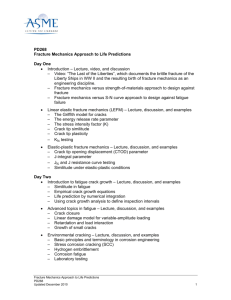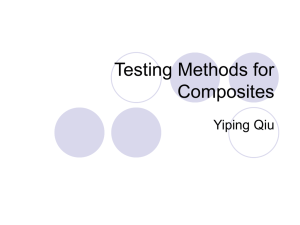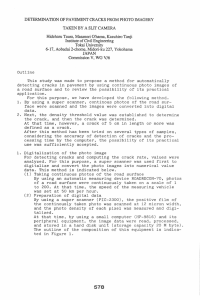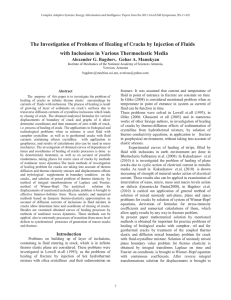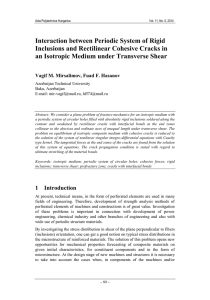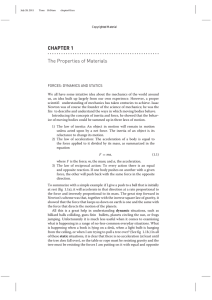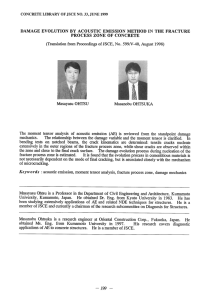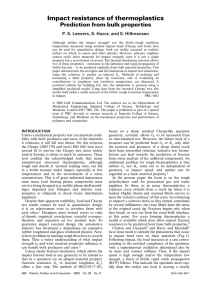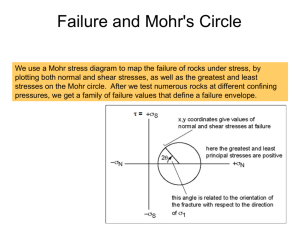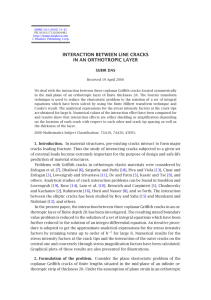Brittle Deformation
advertisement
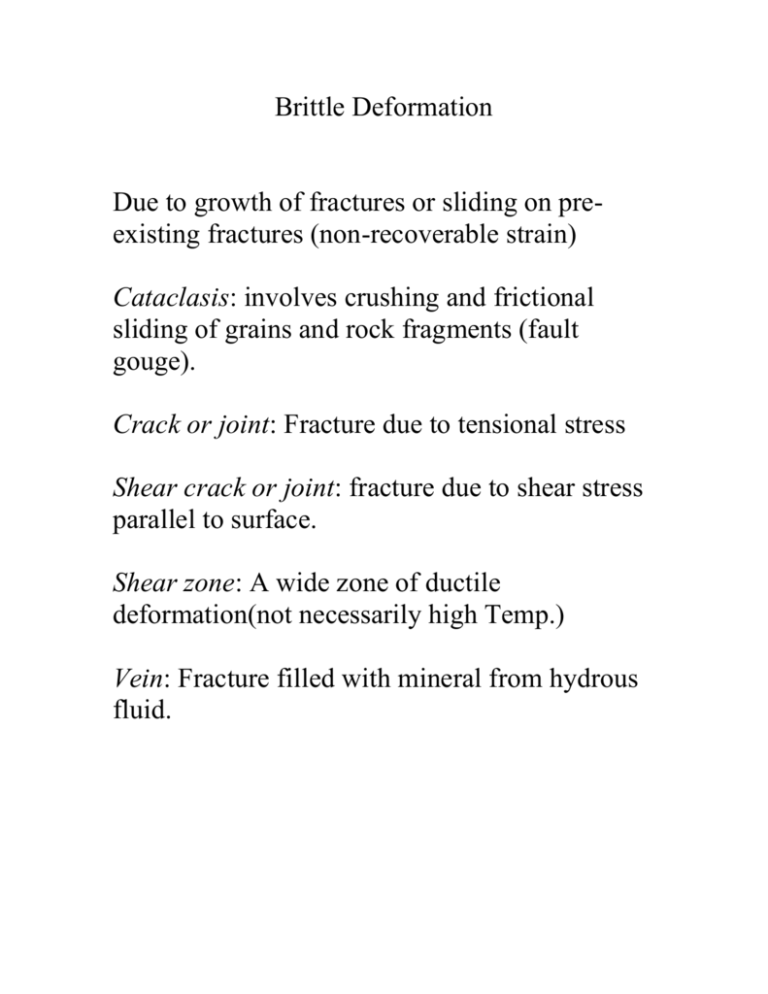
Brittle Deformation Due to growth of fractures or sliding on preexisting fractures (non-recoverable strain) Cataclasis: involves crushing and frictional sliding of grains and rock fragments (fault gouge). Crack or joint: Fracture due to tensional stress Shear crack or joint: fracture due to shear stress parallel to surface. Shear zone: A wide zone of ductile deformation(not necessarily high Temp.) Vein: Fracture filled with mineral from hydrous fluid. Tensile cracks Rocks are very weak under tension (~< 10 MPa), but are v. strong under compression (>100 MPa). Why? Griffith crack: cracks have v. elliptical shapes. Remote stress High stress concentration at crack tip depends on crack length. remote = (2E/c) 0.5 E: Young’s modulus : new surface energy c: crack length Hydraulic fractures (tensile cracks) Form under high pore pressure and high confining pressure. Form parallel to 1 3 types of cracks Mode I: Tensile parallel to 1. Mode II: Sliding mode perpendicular to fracture front. Mode III: Scissors mode, parallel to fracture front. (shear cracks cannot grow in their own plane) Faults Type of shear fracture with displacement Form by coalesence of small cracks during failure. Fault failure criteria Coulomb failure criterion (empirical): = C +n shear stress n = normal stress C = cohesion (= 0 for dry sand) = coefficient of friction Do 3 experiments with increasing 1 and 3 until failure. Repeat experiments with new rock. # 1 2 3 1 175 240 355 3 25 50 100 Plot data on Mohr diagram: Shear stress Normal stress Coulomb line is tangent to Mohr circles Slope of Coulomb line = (coeff. of friction) Line from center to point of tangency = 2 = twice angle fault makes with normal to . 120/2 = 60; 90-60 = 30 degrees to 1. Why does failure not occur at 45o to s1 (max. shear). Because the normal stress is too high. Normal stress becomes low enough when angle is 30o. Combined Mohr-Coulomb envelope At higher confining pressures, Coulomb line not straight – becomes curved at higher pressures.
